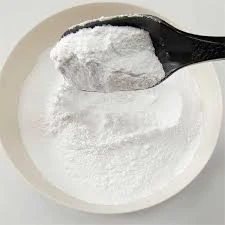
নভে. . 29, 2024 17:00 Back to list
Applications and Benefits of Hydroxypropyl Methylcellulose in Various Industries
The Versatile Applications of Hydroxypropyl Methylcellulose
Hydroxypropyl methylcellulose (HPMC) is a non-ionic, water-soluble polymer derived from cellulose, a naturally occurring biopolymer. This versatile compound has gained immense popularity across various industries due to its unique rheological properties, ability to form gels, and compatibility with a wide range of substances. As we explore the applications of HPMC, it becomes evident that its widespread use is a testament to its effectiveness and adaptability.
Pharmaceutical Industry
One of the primary applications of hydroxypropyl methylcellulose is in the pharmaceutical industry. HPMC serves as an excipient in drug formulations, playing a crucial role in the development of tablets, capsules, and other dosage forms. Its ability to form gels and controlled-release matrices allows for the slow release of active pharmaceutical ingredients (APIs), enhancing the therapeutic efficacy of medications. Additionally, HPMC is used to improve the viscosity of suspensions and emulsions, ensuring better stability and consistency in pharmaceutical products.
In ophthalmology, HPMC is an essential ingredient in eye drops and artificial tears. Its excellent water-retention properties help to lubricate and hydrate the eyes, providing relief from dryness and irritation. As a result, HPMC-based eye drops have become a popular choice for individuals suffering from dry eye syndrome and other ocular conditions.
Food Industry
The food industry also leverages the benefits of hydroxypropyl methylcellulose, where it acts as a thickening agent, emulsifier, and stabilizer. HPMC is commonly used in the production of gluten-free products, providing the texture and structure usually associated with gluten-containing foods. It ensures that these products maintain their moisture and texture, making them more palatable for consumers.
Moreover, HPMC is employed in the formulation of sauces, dressings, and ice creams. Its ability to enhance mouthfeel and improve the overall sensory experience of food products makes it a valuable additive. Additionally, as a vegetarian-friendly alternative to gelatin, HPMC is utilized in the production of vegan desserts and confectionery items, catering to the growing demand for plant-based options.
Construction Industry
hydroxypropyl methylcellulose use

In the construction sector, hydroxypropyl methylcellulose is used as an essential additive in cement and mortar formulations. HPMC improves the workability of these materials, allowing for smoother application and better adhesion to surfaces. It also enhances water retention, which is crucial during the curing process, leading to stronger and more durable building materials.
Furthermore, HPMC helps to prevent cracking and shrinkage, ensuring that constructions maintain their integrity over time. Its use in tile adhesives and joint compounds has become increasingly prominent, contributing to the overall quality and performance of various construction projects.
Cosmetic and Personal Care Products
The cosmetic and personal care industry has recognized the multifunctional capabilities of hydroxypropyl methylcellulose. As a thickener and stabilizer, HPMC is found in a range of products, including shampoos, conditioners, creams, and lotions. It enhances the texture and sensory feel of these formulations, improving spreadability and overall product experience.
HPMC also acts as a film-forming agent in various cosmetic applications, creating a protective barrier on the skin and hair. This property not only enhances product performance but also provides a moisturizing effect, making HPMC a desirable ingredient in skincare formulations.
Environmental Applications
Beyond its traditional applications, hydroxypropyl methylcellulose is gaining traction in environmental applications. Researchers are exploring its potential as a biodegradable polymer and its use in sustainable building materials. Given the increasing emphasis on eco-friendly practices, HPMC may play a significant role in the development of greener alternatives in various industries.
Conclusion
In conclusion, hydroxypropyl methylcellulose is a multifaceted compound with diverse applications that span across multiple industries. From pharmaceuticals to food production, construction, cosmetics, and environmental sustainability, its versatility and effectiveness make it an invaluable ingredient. As industries continue to evolve and consumer demands shift towards more sustainable and innovative solutions, the importance of HPMC is expected to grow, reaffirming its status as an essential component in modern formulations. With ongoing research and advancements, the future looks promising for hydroxypropyl methylcellulose and its applications in a wide range of fields.
-
HPMC for Tile Adhesive: Enhanced Bonding & Workability
NewsAug.28,2025
-
tile-bonding-additives-for-stronger-bonds
NewsAug.22,2025
-
construction-grade-rdp-for-wholesale-needs
NewsAug.22,2025
-
trusted-hec-supplier
NewsAug.22,2025
-
HEC Solutions for Industrial Excellence
NewsAug.22,2025
-
Construction Additives Need HPMC Essentials
NewsAug.22,2025







